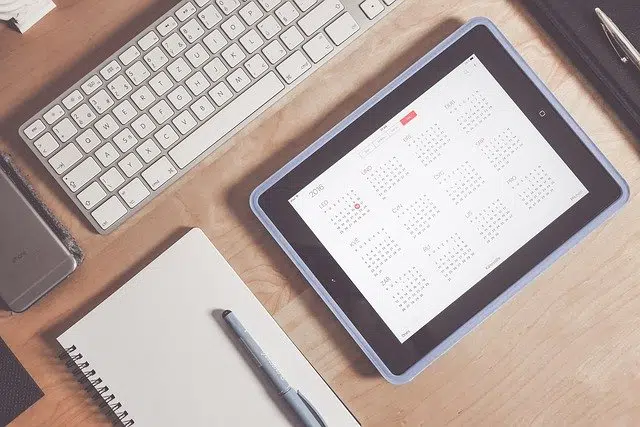
The first diaries were similar to notebooks
The notebook used to write reminders is called an agenda . In this way, what must be done can be recorded in an agenda so as not to forget it.
Time organization
These notebooks are usually divided by day , with a section for each day of the year . In this way, the user can detail date by date what activities they have to carry out.
Agendas are used to remember appointments and events and to organize time . By recording the time of each obligation or pending matter, it is easy not to overlap tasks.
The market offers a wide range of agenda designs, which include different sizes, colors, materials and other characteristics that allow us to choose the one that best suits our needs. There are even agendas that have empty pages to use as covers or dividers.
The binding of the agenda is also a point to take into account when choosing a model. On the one hand, there are those that resemble books, in which the pages are sewn or adhered to the spine, meaning that their structure is fixed and unalterable. But there are also those that have a system of metal hooks that can be opened to remove or add sheets, in addition to changing their order.
Useful in any area
Due to their characteristics, agendas are very important at a work or professional level. A lawyer , for example, can use an agenda to record meetings with clients and visits to court.
Anyone, however, can use an agenda. In these books it is possible to indicate birthday dates , medical appointments , tax or service due dates , etc.
Currently there are also digital agendas . They work like printed agendas, although they usually offer alarm and notification systems so that it is not even necessary to remember to consult it.
Electronic diary
The electronic diary is also known as PDA ( Personal Digital Assistant ), pocket computer or personal organizer . It is a laptop that can be held with one hand on which we can perform tasks such as writing down our contact information , setting reminders, using a calendar and even drawing drawings, although the features depend on each particular model.
These devices reached their greatest relevance throughout the 1980s, particularly through brands such as Casio, Hewlett-Packard and Sharp . The first models did not have a touch screen , but included a keyboard for operation. Furthermore, they did not offer a color image either, but rather in some shades of gray or green.
Little by little, improvements and innovations emerged, until these unique devices became authentic laptop computers with capabilities comparable to those of the oldest desktop computers. However, with the emergence of smart mobile phones and tablets they became obsolete in a very short time.

A tablet with the calendar application
Today, the notion of "agenda" can refer to a mere application within our favorite portable device , which is capable of doing everything we can think of, including watching movies and playing video games. In other words, what once required a specific device can currently be emulated in a small program within an operating system.
Another meaning
It should be noted that the notion of agenda is also used with reference to a list of issues or topics that must be addressed or that have influence in a certain area. For example: “The Chinese company's proposal is part of the agenda that the members of the board of directors will discuss at the next assembly,” “The reform of the tax regime is not on the president's agenda,” “The feminist organizations that promote “The legalization of abortion believes that the issue does not have the presence it deserves on the media agenda.”
